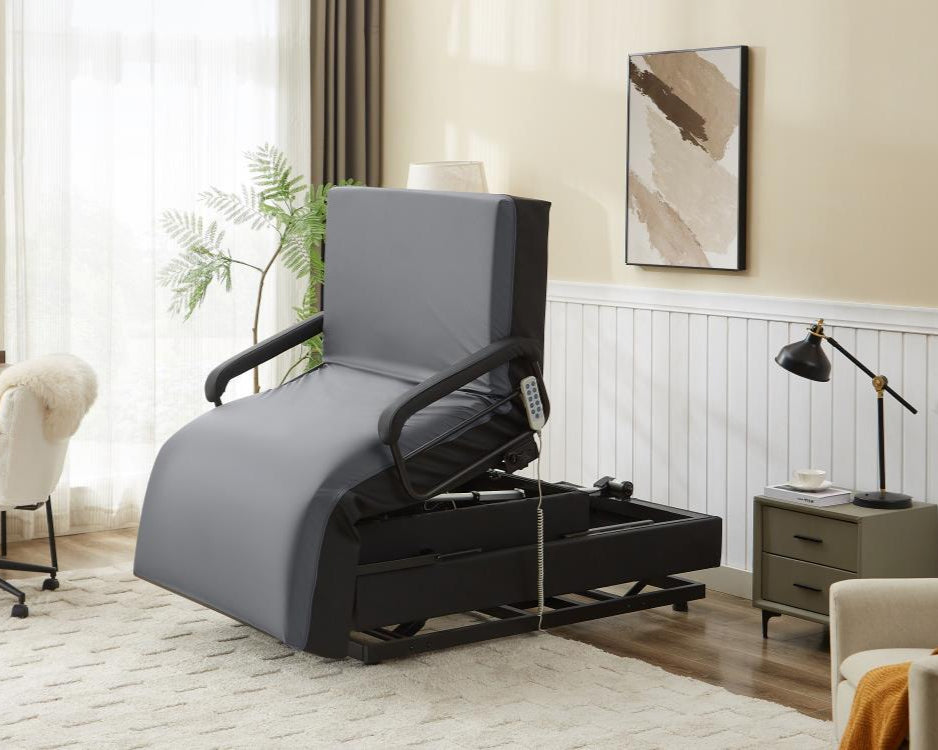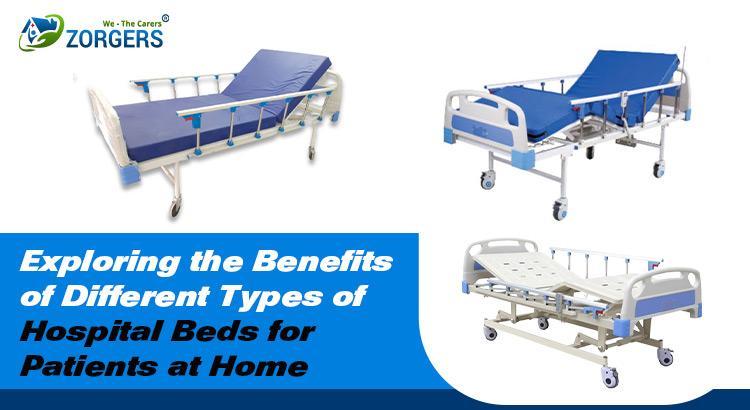The Ultimate Guide To Hospital Beds For Home Use
The Ultimate Guide To Hospital Beds For Home Use
Blog Article
Unknown Facts About Hospital Beds For Home Use
Table of ContentsThe Facts About Hospital Beds For Home Use RevealedHospital Beds For Home Use - QuestionsSome Known Factual Statements About Hospital Beds For Home Use How Hospital Beds For Home Use can Save You Time, Stress, and Money.6 Simple Techniques For Hospital Beds For Home Use9 Simple Techniques For Hospital Beds For Home UseHospital Beds For Home Use Fundamentals Explained
There are 3 main types of hospital beds: manual, semi-electric, and fully-electric. These beds use hand cranks to change the bed's elevation and increase and reduce the head and the foot.
Semi-electric beds have an electrical motor to elevate and reduce the head and foot portions of the bed (hospital beds for home use). Full-electric beds have an electrical motor that can increase the head and foot sections of the bed as well as the whole height and positioning of the bed.
Examine This Report about Hospital Beds For Home Use
Some designs can likewise relocate right into more positions, such as the Trendelenburg (tilt) position. There are a number of kinds of healthcare facility beds, each made to satisfy specific client demands. Right here are some common types: This is one of the most typical kind of hospital bed, created for basic medical use. It has a handbook or electrically adjustable headrest, footrest, and elevation.
Lower to the ground than a standard bed. This kind of bed is developed for bigger clients, with a bigger frame and higher weight capability than a basic bed.
This kind of bed is designed for critically ill people that need open tracking and specialized medical tools such as ventilators and infusion pumps. This kind of bed is created for usage during labor and distribution, with flexible placements and features to sustain the mom and infant throughout the birth procedure.
How Hospital Beds For Home Use can Save You Time, Stress, and Money.
Multiple feature and the devices carry out expanding traction to different parts of the vertebra and the extremities without relocating the human body. These are just a couple of examples of the sorts of health center beds offered. The certain sort of bed used will certainly rely on the individual's problem, clinical demands, and various other factors.
Here is things you require to know. A one-function medical facility bed is a medical bed that enables an individual to relocate only the head or foot section up or down. A 2 feature hospital bed generally refers to a kind of clinical bed that has 2 flexible functions to help patients in medical facilities or treatment facilities.

Hospital Beds For Home Use Fundamentals Explained
A 7-function ICU bed is a sort of clinical bed that provides a number of flexible functions to support seriously unwell individuals in a critical care unit (ICU) (hospital beds for home use). The 7 functions usually include: Back-rest adjustment: The backrest can be adapted to various angles to help the client stay up or relax conveniently
Height change: The bed can be raised or decreased to make it easier for patients to enter and out of bed, and for caretakers to give treatment. Trendelenburg position: The whole bed can be slanted to advertise blood flow and blood circulation in the body. Reverse Trendelenburg position: The bed can additionally be tilted in the contrary direction to advertise blood circulation and blood circulation in the upper body.
While more budget-friendly than electric versions, these beds require exertion for changes. The primary benefits of hands-on beds are their affordability and reliability, as they do not rely upon electrical energy. The demand for hands-on effort can be a constraint in circumstances where quick modifications look these up are necessary or where caretakers deal with physical difficulties.
Some Known Details About Hospital Beds For Home Use
They are well-suited for clients who call for minimal repositioning for comfort or medical requirements. Semi-electric medical facility beds offer an equilibrium of handbook and electrical controls. The head and foot sections are usually changed with electric controls, while the elevation is changed manually. These beds give an optimal middle ground in between handbook and totally electric options, providing convenience of usage without the complete price of electrical models.
Semi-electric beds are fit for people who need modest changes to the head and foot sections but can take care of without regular elevation changes. This makes them an affordable solution for those seeking comfort and ease without the demand for consistent repositioning. Completely electric hospital beds feature electrical controls for smooth changes to the height, head, and foot areas.
Specialty health center beds, such as ICU beds, long-lasting treatment beds, and bariatric beds, are thoroughly made to attend to certain clinical needs. These beds provide customized look after varied individual teams, enhancing both results and convenience. In the complying with areas, we will certainly check out the main sorts of specialty health center beds, outlining their specific advantages and applications.
With years of experience in making electrical direct actuators - hospital beds for home use and close collaboration with the healthcare market, TiMOTION is well-positioned to give trustworthy health care remedies. Our up and down incorporated firm manages every step of the production process, from design to actuator assembly, ensuring we supply outstanding value and tailored services tailored to your certain needs
A Biased View of Hospital Beds For Home Use

To discover more concerning incorporating these technologies right into your products, contact us today. Further reading:.
Information is sourced from the Medicare Expense Report. Accessed January 2025. Short-term intense treatment medical facilities have the highest typical number of beds at 187. They are one of the most common kind of hospital in the U.S. and comprise more than 50% of U.S. health centers. Children's hospitals have 178 beds usually and VA health centers average 175 beds.

A Biased View of Hospital Beds For Home Use
A hospital bed is a bed designed specifically for clinical functions. It is not just a place for patients to rest, but likewise a platform for medical procedures. Unlike normal home beds, healthcare facility beds generally have flexible attributes, which can assist in medical staff to make various modifications according to the requirements of clients, such as transforming the height, disposition, and assistance angle of the back and legs of the bed.
Report this page